Blog

LPS Already Seeing Increased HELOC Problems; More to Come
Lender Processing Services (LPS) Mortgage Monitor for October reports thatrn48 percent of outstanding second lien home equity lines of credit (HELOCs) werernoriginated between 2004 and 2006 and the vast majority have draw periods of 10rnyears. Therefore these loans are set tornbegin amortizing over the next several years and many borrowers may see monthlyrnpayments increase. According to LPS Senior Vice President Herb Blecher, recentrnincreases in new problem loans among the HELOCs originated prior to 2004 (thatrnhave already begun amortizing) indicate increased risk of more delinquenciesrnahead.</p
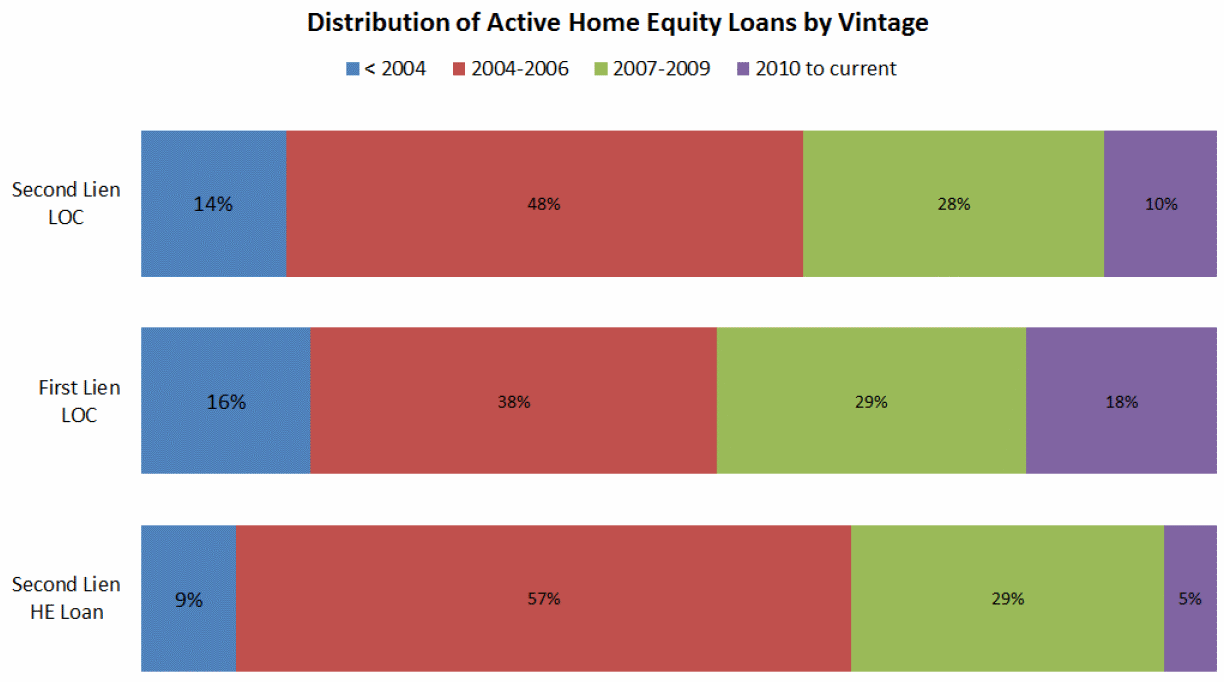 </prn<p"Inrnthe aggregate, the home equity market is experiencing lowerrndelinquencies,” said Blecher. “However, among the HELOC populationrnthat has already begun amortizing, we are actually seeing an increase in newrnseriously delinquent loans. As of today, only 14 percent of second lien HELOCsrnhave passed this 10-year mark, leaving a very large segment of the market atrnrisk of payment increases over the coming years. Nearly half of all of thesernlines of credit were originated between 2004 and 2006, with the oldest set tornbegin amortizing next year. If this trend toward post-amortizing delinquenciesrncarries over, we could be looking at significant risk to the home equity marketrnover the coming years.</p
</prn<p"Inrnthe aggregate, the home equity market is experiencing lowerrndelinquencies,” said Blecher. “However, among the HELOC populationrnthat has already begun amortizing, we are actually seeing an increase in newrnseriously delinquent loans. As of today, only 14 percent of second lien HELOCsrnhave passed this 10-year mark, leaving a very large segment of the market atrnrisk of payment increases over the coming years. Nearly half of all of thesernlines of credit were originated between 2004 and 2006, with the oldest set tornbegin amortizing next year. If this trend toward post-amortizing delinquenciesrncarries over, we could be looking at significant risk to the home equity marketrnover the coming years.</p
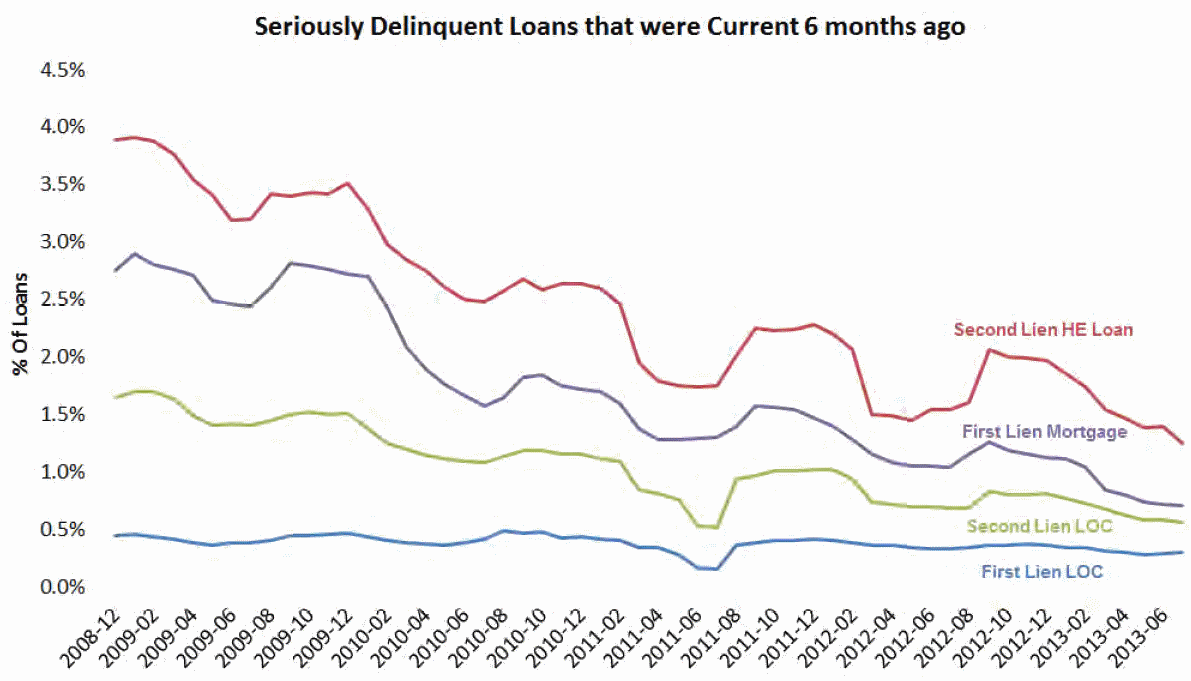 </p
</p
In addition to the current risks posed by the homernequity market the Monitor focuses on:</p<ul class="unIndentedList"<liPrepayment activity, mortgagernoriginations, and property sales</li<liHome prices and negative equity</li<liJudicial vs. non-judicial staterndisparities</li</ul
The company reports that prepayments dropped againrnin October to around 4.3 percent of mortgages. rnAs recently as May of this year prepayments were running near 6.5rnpercent. While the rate of repaymentsrncontinues to drop, the decline slowed with retreating rates in October.</p
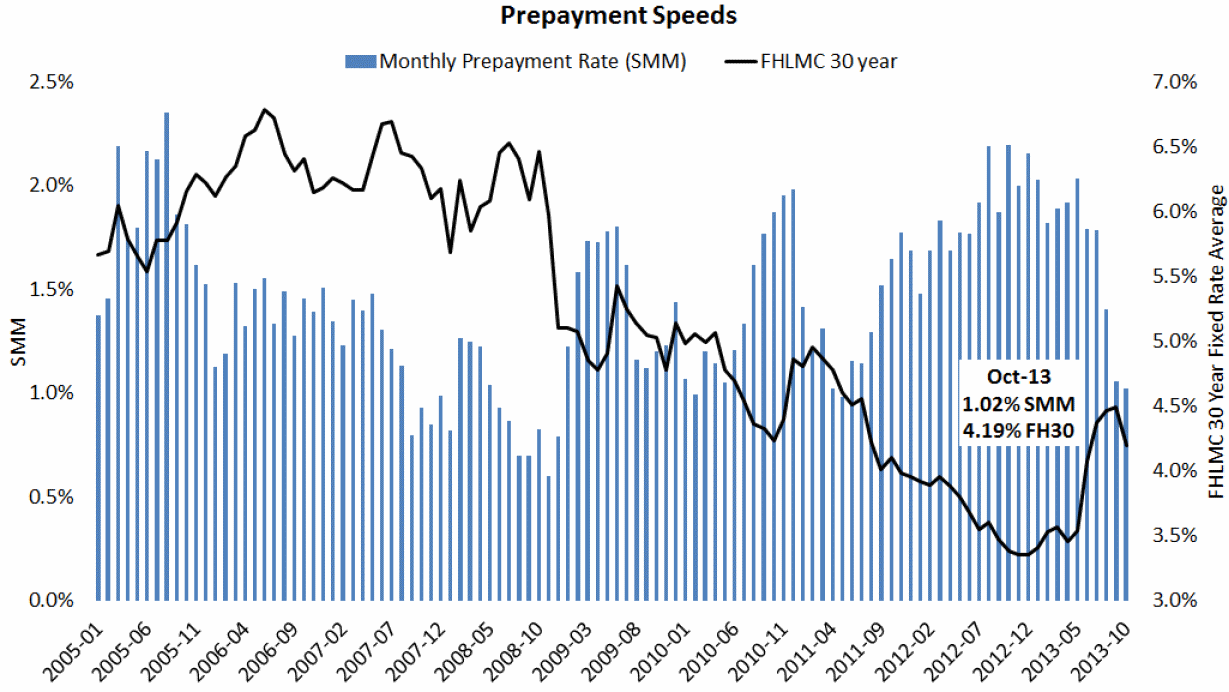 </p
</p
Mortgage originations are down sharply, havingrndropped 43 percent since June. Therndecline has been driven in large party by refinancing which represented 50rnpercent of originations in October compared to 75 percent at the beginning ofrn2013. </p
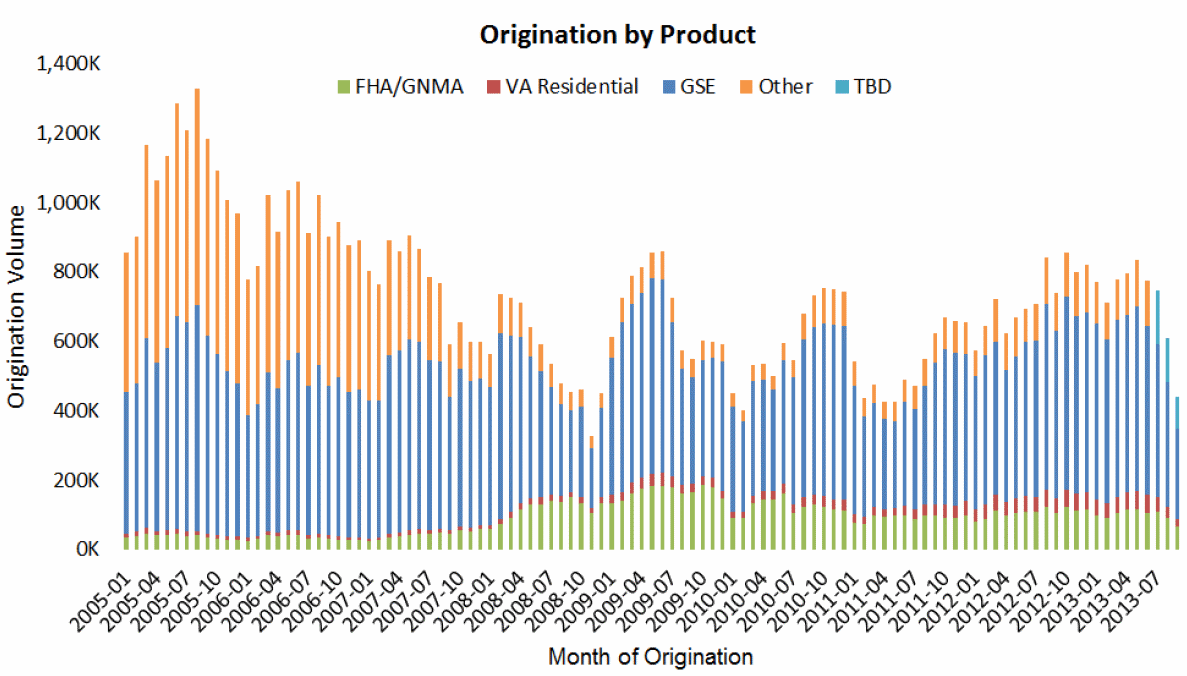 </p
</p
Home sales have also pulled back from recent peaksrnthis past summer but the ratio of distressed sales to equity sales isrnimproving. Only 14.2 percent of sales inrnSeptember were owned real estate (REO) or short sales, the lowest percentagernsince 2007.</p
Home prices are up about 9% year over year to an average ofrn$232,000 but were up only 0.2 percent month-over-month as seasonal slowingrncontinued. Nationally prices are aboutrnhalfway back from the $202,000 low point of January 2012. Prices peaked in June 2006 at a nationalrnaverage of $270,000</p
Home price improvement is driving negative equity lower. LPS estimates that about 11.6 percent ofrnloans remain underwater compared to 18.8 percent at the beginning of the year. LPSrnsays that negative equity estimates vary widely so it has a adopted a newrnmethodology that accounts for not only the current combined loan-to-value (LTV)rnratio of all mortgages but also the impact of distressed sale discounts onrnloans in serious delinquency or foreclosure. As the negative equity situation improves, thernvolume of short sales has dropped from 56 percent of distressed sales inrnSeptember 2012 to 44 percent this past September. The discounts offered for short sales arerndeclining as sales volumes decrease. </p
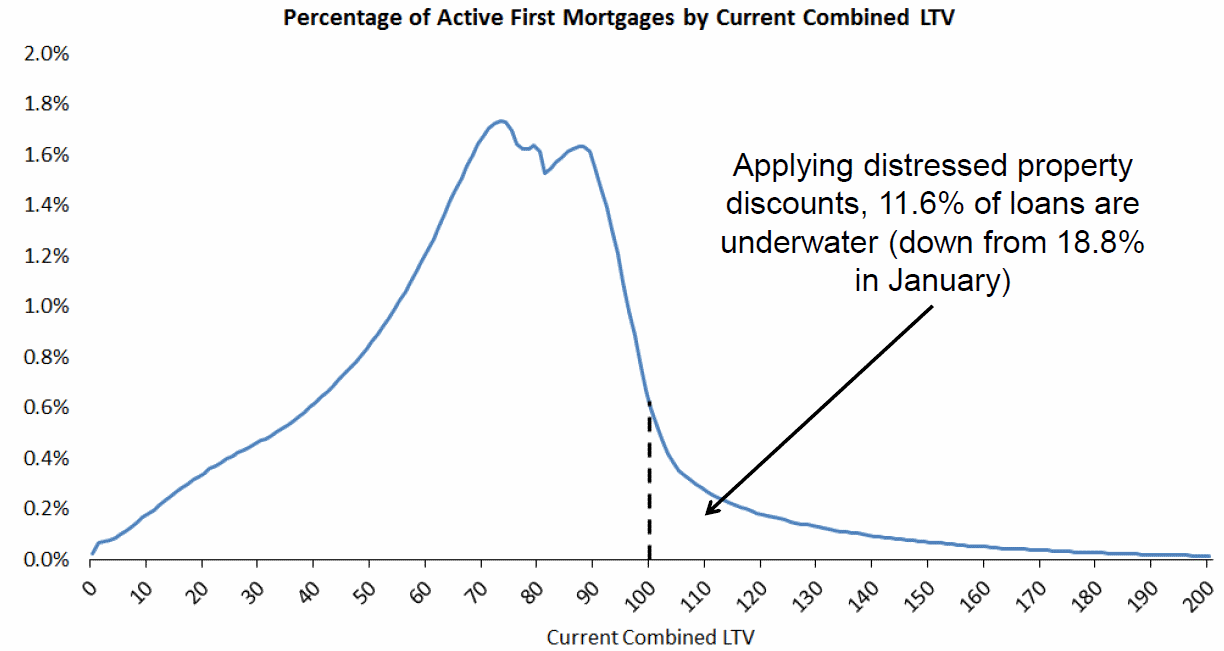 </p
</p
Judicial states are lagging in price recovery since the nationalrntrough in January 2012. As can be seenrnfrom the graphic, with the exception of Florida all of the states where pricesrnhave increased more than 15 percent above that trough are non-judicial states.</p
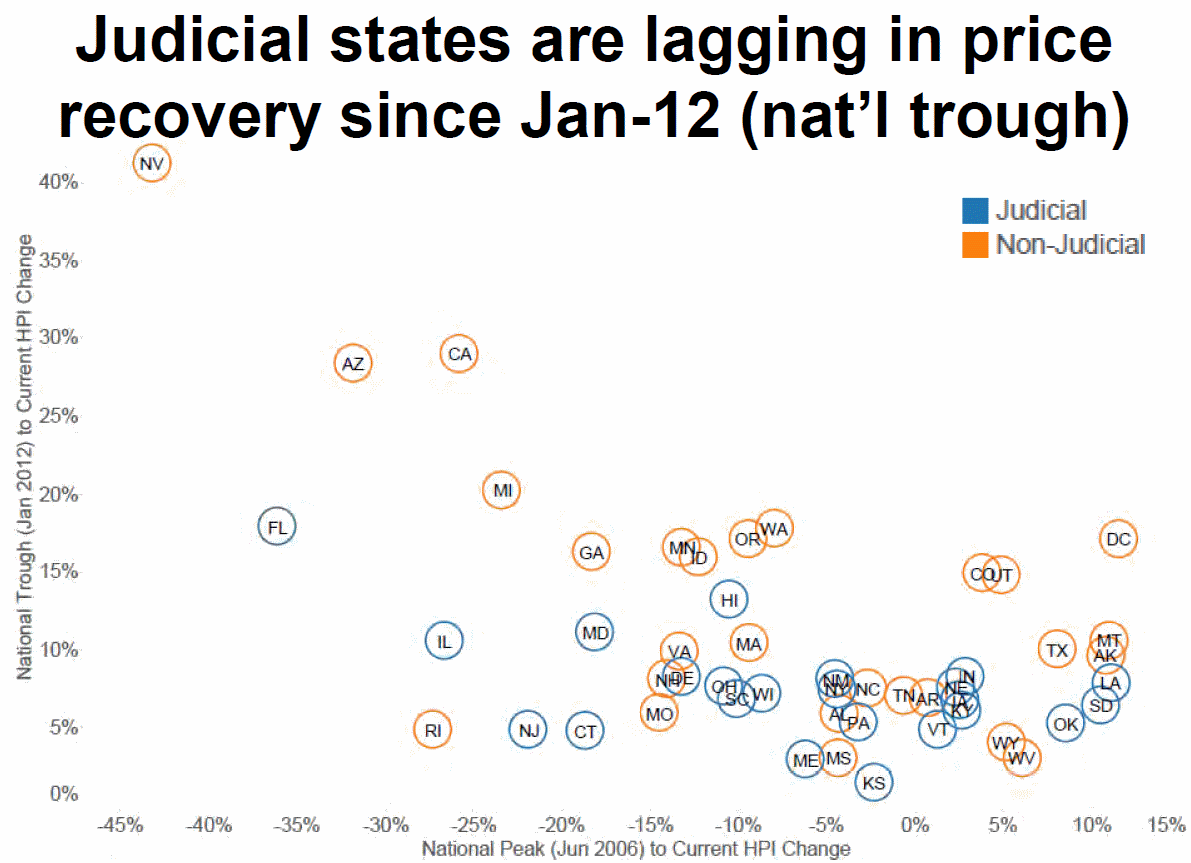 </p
</p
New problem loans arernincreasing in both judicial and non-judicial but the rate is higher in thernformer and the gap between the two is growing. rnForeclosure starts are also still elevated in judicial states where theyrnincreased 12 percent from August to September while starts declined by 5rnpercent during the same period in non-judicial states. However,rnincreasing levels of foreclosure sale activity have helped improve pipelinernratios (the ratio of loans that are seriously delinquent and in foreclosure tornthe six-month average of foreclosure sales) in judicial states. The judicialrnstate pipeline ratio had declined from a high of 118 months of inventory, downrnto 47 months as of October, much closer to the non-judicial states’ 39 monthsrnof inventory. </p
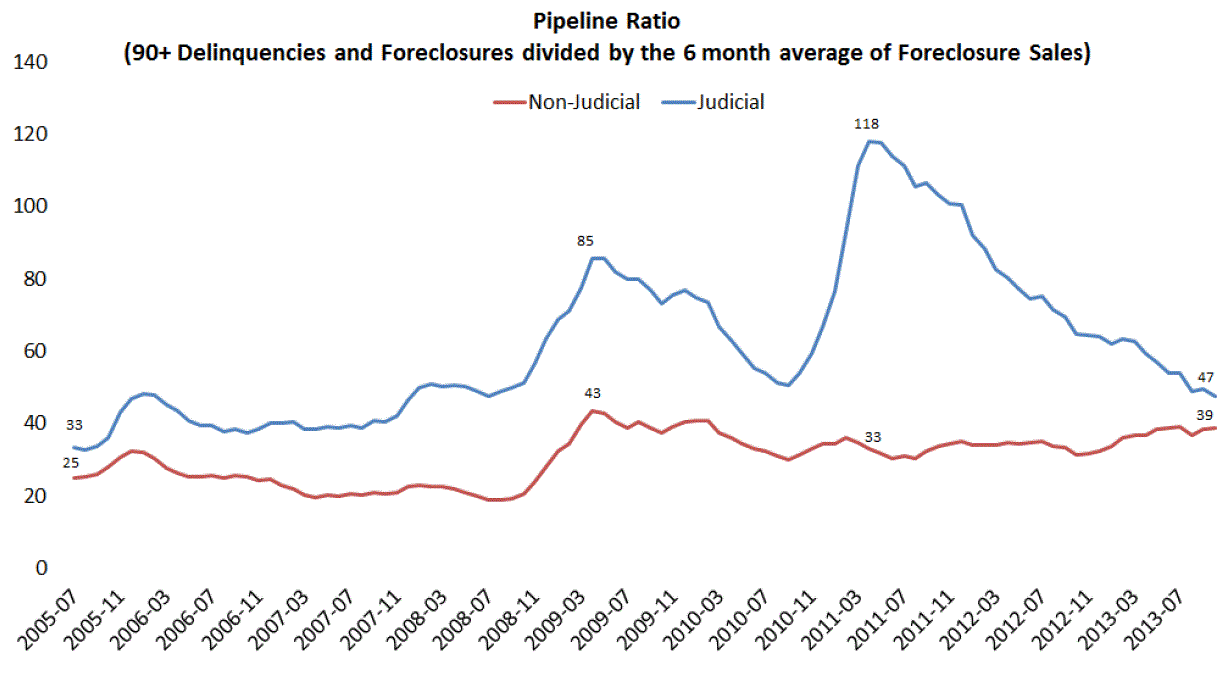
All Content Copyright © 2003 – 2009 Brown House Media, Inc. All Rights Reserved.nReproduction in any form without permission of MortgageNewsDaily.com is prohibited.
Latest Articles
By John Gittelsohn August 24, 2020, 4:00 AM PDT Some of the largest real estate investors are walking away from Read More...
Late-Stage Delinquencies are SurgingAug 21 2020, 11:59AM Like the report from Black Knight earlier today, the second quarter National Delinquency Survey from the Read More...
Published by the Federal Reserve Bank of San FranciscoIt was recently published by the Federal Reserve Bank of San Francisco, which is about as official as you can Read More...

Comments
Leave a Comment